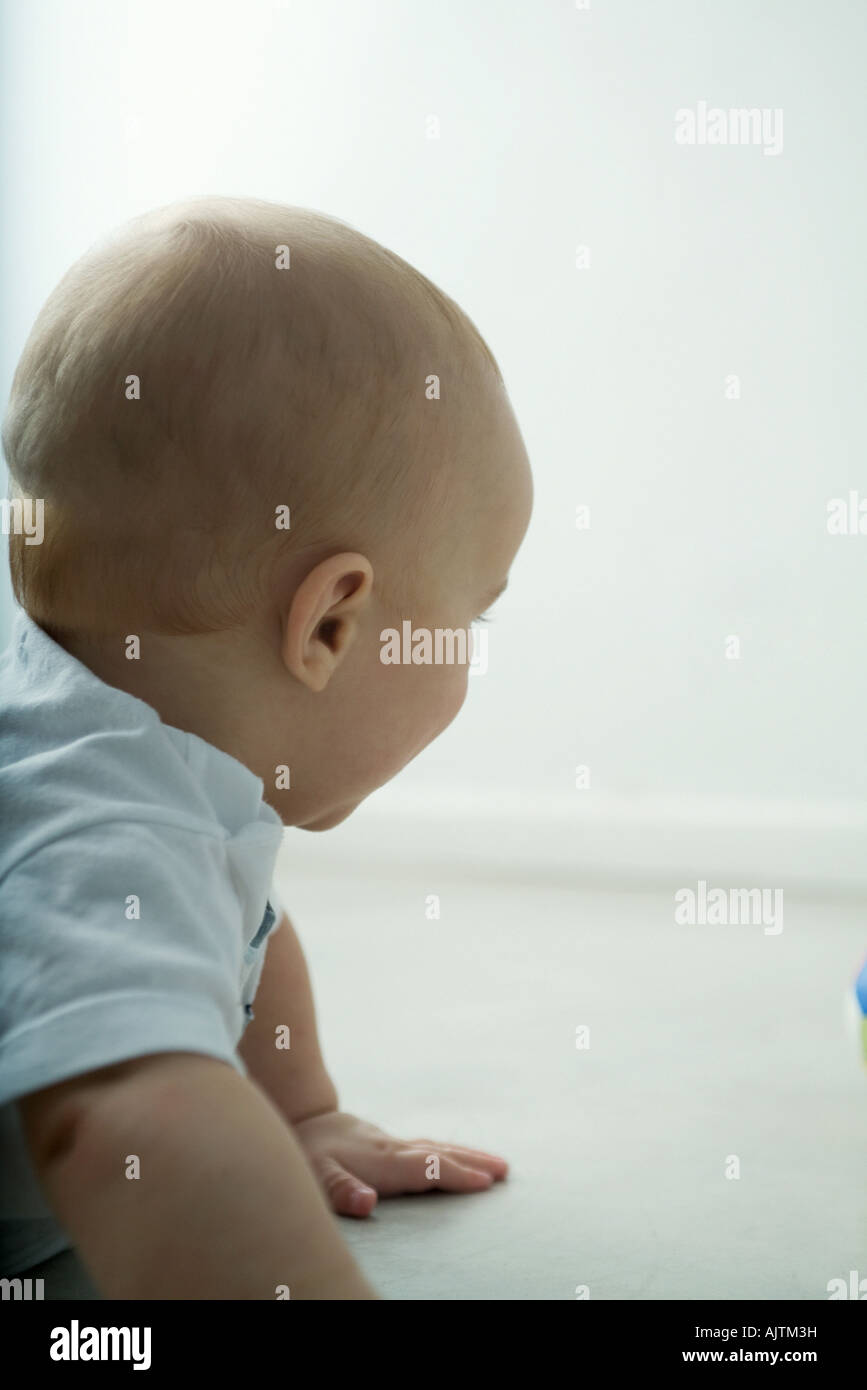Have you ever noticed your little one, newly standing, suddenly tilting their head down and gently bumping it against the floor? It might look a bit strange, but this behavior is actually quite common and usually harmless. While they might appear to be head-banging, there’s a lot more to it than meets the eye. This article will explore the reasons behind this seemingly peculiar behavior and delve into why it’s more a sign of development than a cause for concern.

Image: www.reviewhome.co
Understanding the “Head-on-the-Floor” Phenomenon
For parents, it’s natural to feel a pang of worry when we see our children engaging in behaviors that seem unusual or potentially dangerous. This instinctive protective instinct often leads to questions about what’s going on and whether it’s something we should be concerned about. In the case of a baby putting their head on the floor, the key is to remember that their actions are dictated by their developing senses and motor skills. They are still learning to understand and navigate their world, and this seemingly strange behavior is an essential part of their journey.
The Curious Case of “Head on the Floor”
Let’s break down the potential reasons behind this behavior:
Exploring Sensory Input
-
Babies are curious little explorers, and their senses are constantly bombarded with new information. Their touch, sight, hearing, smell, and taste are all in overdrive as they try to make sense of the world around them.
-
Putting their head on the floor allows them to experience different sensations, like the coolness of the surface against their skin, the texture beneath their head, and the sounds the floor makes when they bump it. This sensory exploration helps them learn about the physical properties of their environment.
Balancing Act and Motor Control
-
Standing is a huge milestone in a baby’s development. It involves coordination, strength, and balance – skills that are still under construction.
-
When a baby stands, they often struggle to maintain balance. One way they might try to regain their equilibrium is by leaning forward and putting their head down. This action helps them shift their center of gravity and feel more stable.
-
It’s essential to think of these “head-on-the-floor” moments as baby-led practice for mastering balance and coordination. This is a vital skill, which will eventually allow them to navigate the world with confidence and independence.

Image: www.alamy.com
Social Engagement
-
While not always the case, sometimes this behavior can be a way of seeking attention or engaging with their caregivers.
-
They might notice that putting their head on the floor gets a reaction from their parents, which could, in turn, reinforce the behavior. This doesn’t necessarily mean they are doing it maliciously, but rather an exploration of how their actions affect the world around them.
When to Be Concerned
While the “head-on-the-floor” phenomenon is generally harmless, it’s essential to watch for warning signs that might indicate a deeper issue:
- Persistence: If your baby’s head-on-the-floor behavior is persistent and accompanied by other symptoms like a change in behavior, mood, or appetite, it’s worth seeking advice from your pediatrician.
- Pain: Watch for signs of pain or discomfort during this behavior. If they seem to be in distress, it could be a sign of an underlying medical issue.
- Head Injury: In rare cases, there’s a possibility of a head injury. If your baby is showing signs of a concussion, like vomiting, loss of consciousness, or confusion, seek medical attention immediately.
What You Can Do
- Provide a Safe Environment: Create a safe and structured environment where your baby can explore and practice standing without potential risks. Cushioned surfaces like carpets or soft mats can help cushion any falls.
- Encouragement: Instead of punishing or scolding, focus on positive reinforcement. Offer your baby words of encouragement and praise when they stand independently, no matter how momentarily.
- Patience: Remember that this is a natural part of development. As your baby’s motor skills and balance improve, this behavior will likely fade away on its own.
Beyond the Head on the Floor
The “head-on-the-floor” is just one example of the many quirky, seemingly strange behaviors that babies may exhibit during their early development. Other behaviors can include:
- Waving Hands: This is a delightful sign of their developing motor control and social skills.
- Rocking Back and Forth: While it might make you nervous, it’s often a sign of self-soothing or a way to help them regulate their senses.
- Throwing Toys: This is their way of experimenting with cause and effect and learning about the world around them.
Baby Putting Head On Floor While Standing
Conclusion:
As parents, we often find ourselves navigating an ocean of unfamiliar and sometimes perplexing behaviors. Remember that these behaviors often offer valuable insights into your baby’s development. While the head-on-the-floor behavior might seem unusual, it’s part of a larger and fascinating journey of exploration and growth. If you have any concerns about your baby’s development, don’t hesitate to reach out to your pediatrician for professional guidance. Every baby is unique, and with a little understanding and patience, you can help navigate this exciting and often unpredictable journey of childhood together.





